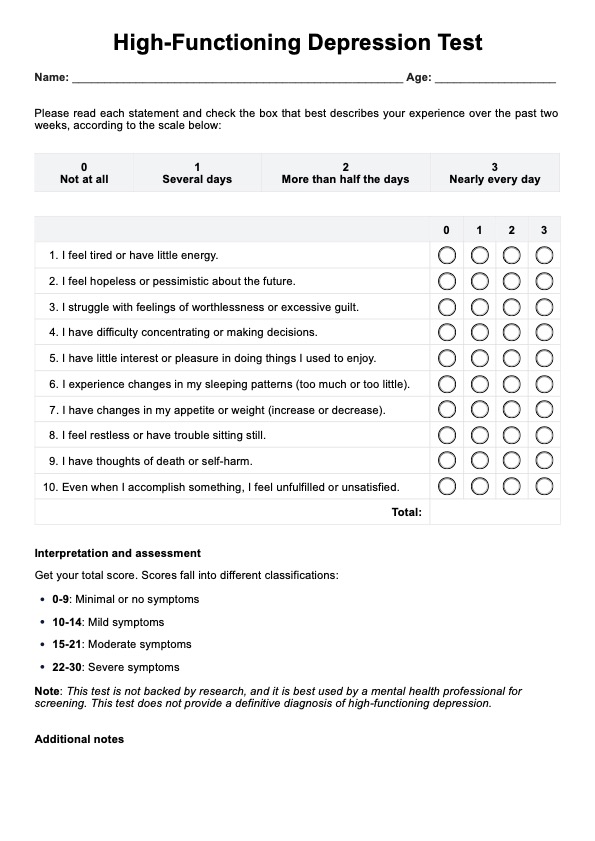The hardest type of depression is often considered to be treatment-resistant depression (TRD), where standard treatments like medication and therapy are less effective. This form of depression may require more advanced interventions such as electroconvulsive therapy (ECT) or transcranial magnetic stimulation (TMS).

High-Functioning Depression Test
If you suspect that your client is depressed, use our High-Functioning Depression Test template for quick and easy screening today.
High-Functioning Depression Test Template
Commonly asked questions
If you're experiencing symptoms like persistent low mood, lack of enjoyment in activities, fatigue, and feelings of worthlessness yet still managing your daily life effectively, you may be struggling with high-functioning depression. You may also take a test for high-functioning depression.
High-functioning depression can be treated without medication through therapies like cognitive behavioral therapy (CBT), mindfulness practices, regular physical exercise, and lifestyle changes. These interventions focus on developing coping strategies and addressing negative thought patterns.
EHR and practice management software
Get started for free
*No credit card required
Free
$0/usd
Unlimited clients
Telehealth
1GB of storage
Client portal text
Automated billing and online payments











